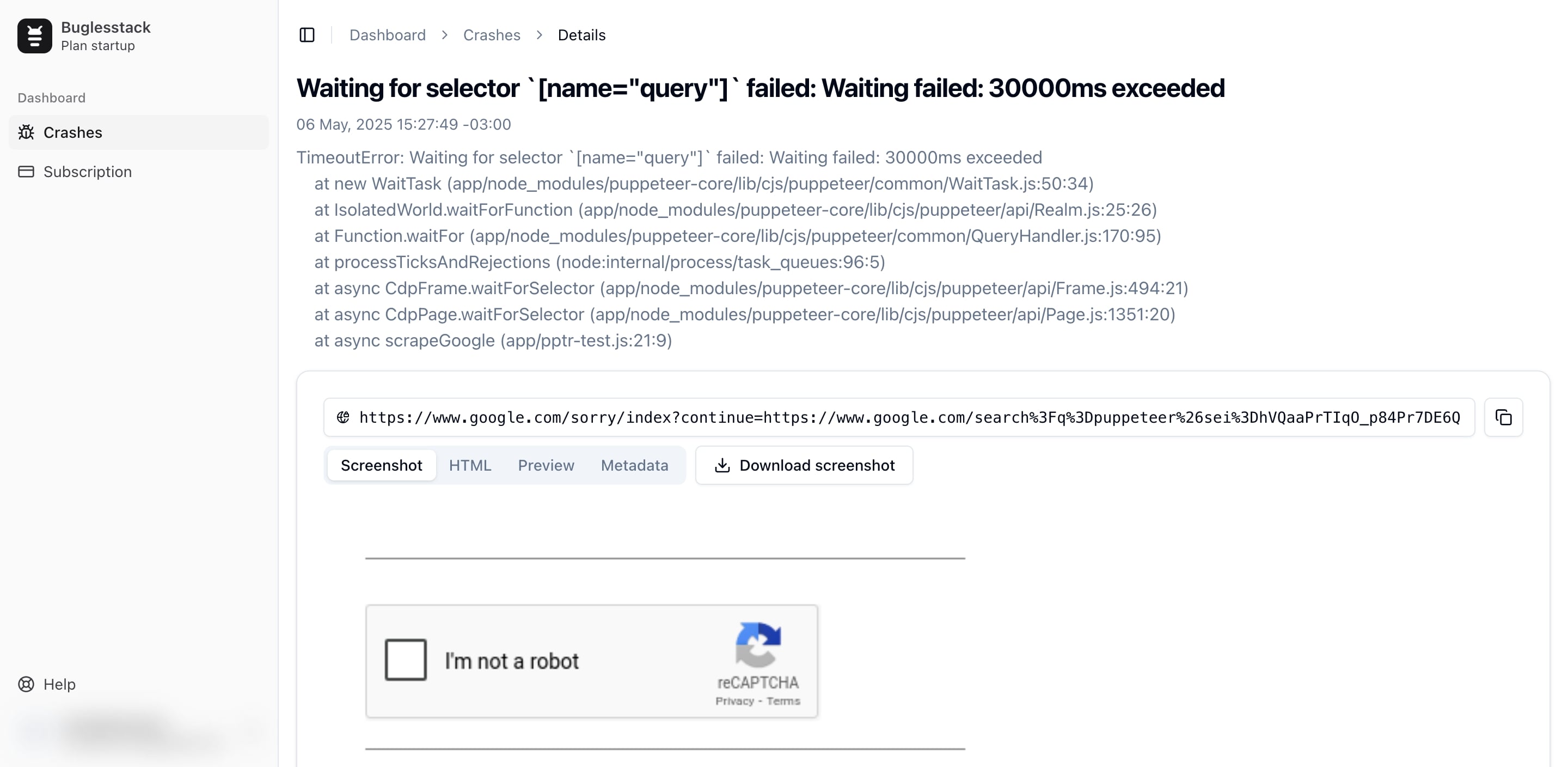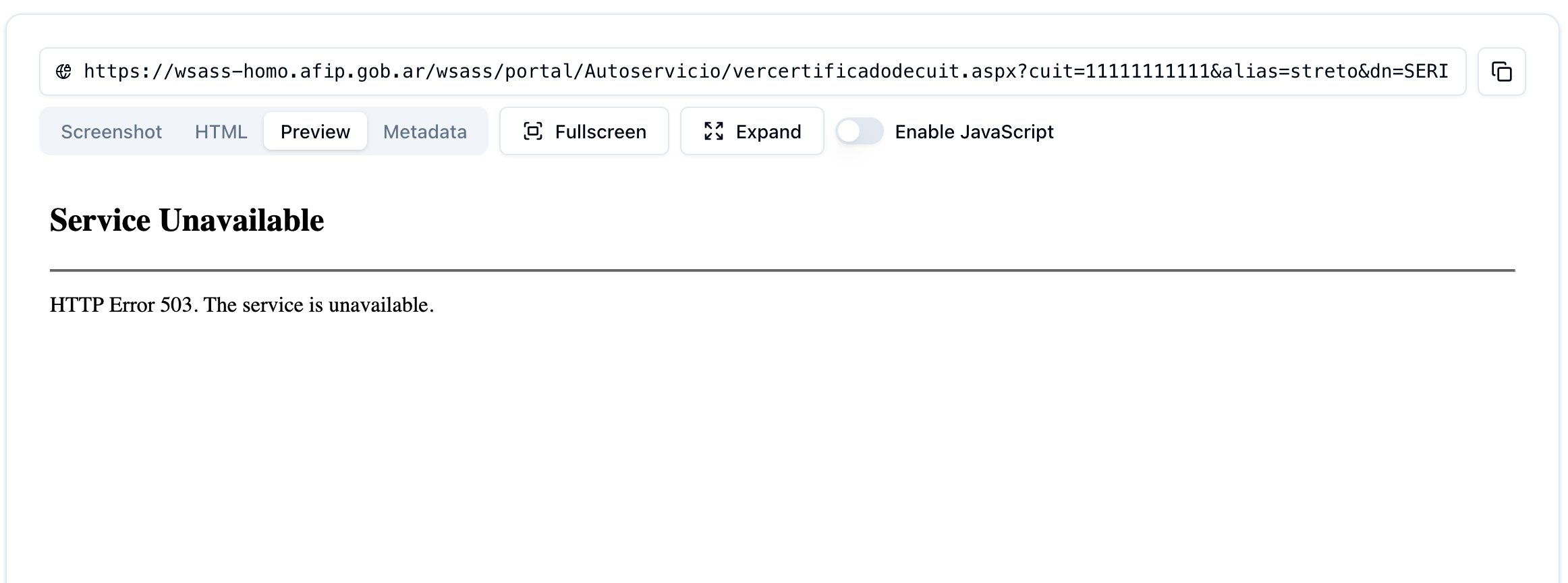How I finally stopped suffering from browser automation crashes
From endless crash-hunting to instant answers—how I built Buglesstack to make browser automation debugging fast, visual, and painless.

Let’s be real: browser automations crash. They crash often. And they crash when you least expect it—usually at 2 AM when you’re feeling smug about how “stable” your code is.
I’ve been building automations since 2016. My journey:
- 2016: Started with Electron. Yeah, I know—it’s like using a bus to deliver a pizza. But it ran on my machine, so it worked.
- 2018: Moved to PhantomJS. It’s dead now.
- 2021: Finally found Puppeteer. Thank the dev gods it was still alive when I joined.
Every single tool had one thing in common: They all broke. And when they did, I had the same headache—finding out what was going on inside the browser at the exact moment of the crash.
Sentry could tell me where my code broke. But if I was waiting for #query to appear and it never did, I didn’t just want a stack trace—I wanted to see what was there instead.
The Old Way (a.k.a. The Painful Way)
Here’s my old crash-debug workflow:
- On crash, take a screenshot and HTML dump.
- Save them to S3.
- Save the URLs in my DB.
- Wait for a Sentry email.
- Go to the DB, find the row, click the links, download the files, open them… repeat until I lose the will to live.
This wasn’t a problem for small projects. But once my automations started getting real traffic, crashes multiplied like rabbits. Suddenly I was spending more time hunting crash data than actually fixing bugs.
So I did what any lazy developer does when a process is too slow and annoying…
The New Way (a.k.a. I Built My Own Tool)
Introducing: Buglesstack 🎺🐛

Instead of the clunky manual process, every crash now sends one complete report straight to Buglesstack with:
- Error message
- Error stack
- Browser URL at the crash moment
- Full-page screenshot
- Full HTML snapshot
- Any custom metadata I want
Now when something breaks, I just open Buglesstack, see everything in one place, and fix it right away.
The funny thing? Crashes that used to sit on my to-do list for days now get fixed the same day. Not because they’re easier—because I’m no longer wasting time jumping between my DB, S3, and local files like a circus act.
Why I Made It Public
Once I saw how much faster this made my life, I thought, “Other devs probably hate their crash workflow too.”
So I opened Buglesstack as Open Source, you can follow the instructions to install it or use the cloud version.
Upcoming stuff: email notifications, crash archiving, filtering, grouping—you name it. I’m my own biggest user, so I’m constantly adding the things I wish it had yesterday.
If you try it and have ideas, email me at ivan@buglesstack.com. I’m all ears.
Bonus: Happy Customers
Thanks to Buglesstack, I can now instantly answer my customers when their automation fails.
Example: one crash report showed a “503 Service Unavailable” page. I just screenshotted the report preview and said:

Hi, it’s not us—the site you’re automating is down.
That’s it. No digging. No guessing. The customer was happy. I was happy. Everyone wins.
If your browser automations crash (and they will), don’t make debugging a treasure hunt. Give Buglesstack a spin.